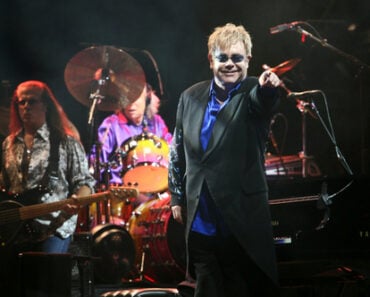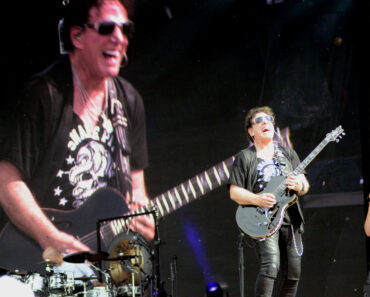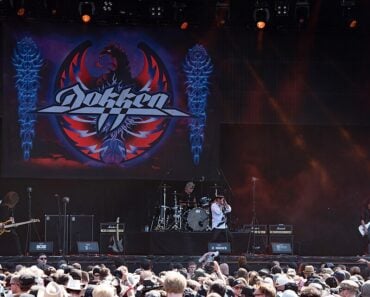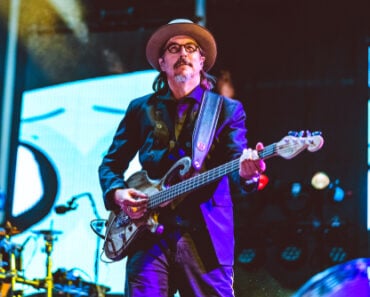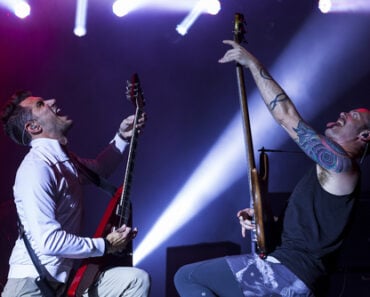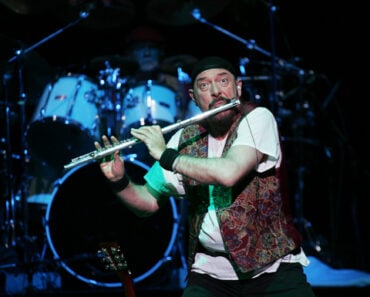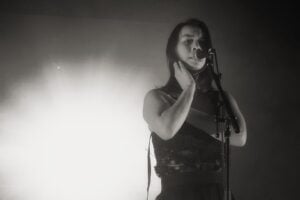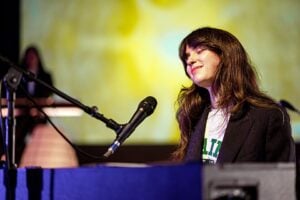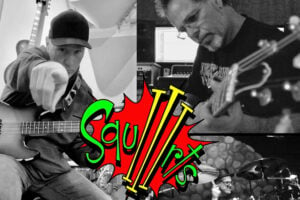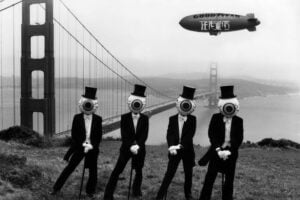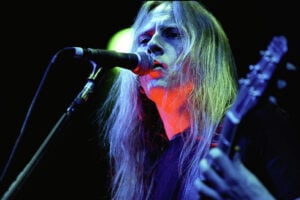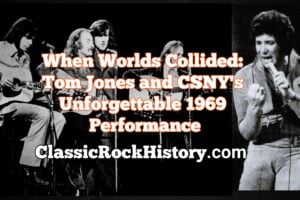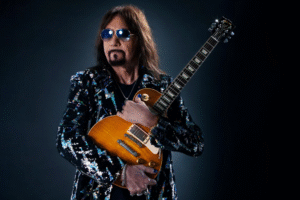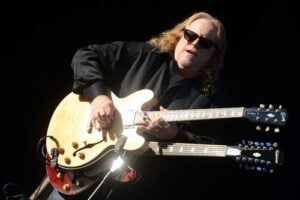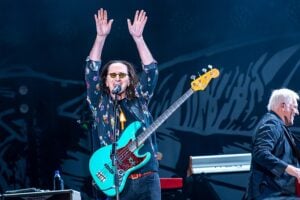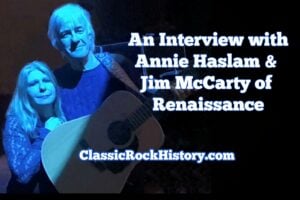
Public domain, via Wikimedia Commons
The Yardbirds emerged as one of the most influential rock bands of the 1960s, leaving an indelible mark on music history despite their relatively brief existence. Formed in London in 1963, the band became the launching pad for three of rock’s most legendary guitarists—Eric Clapton, Jeff Beck, and Jimmy Page—while pioneering sounds and techniques that would influence countless musicians in the decades to follow. Throughout their original five-year run, The Yardbirds released five studio albums and achieved significant commercial success with hits like “For Your Love,” “Heart Full of Soul,” “Shapes of Things,” and “Over Under Sideways Down.” Originally a blues-based band known for their signature “rave-up” instrumental breaks, The Yardbirds evolved to incorporate psychedelic elements and experimental techniques that helped establish the foundation for psychedelic rock, progressive rock, and early heavy metal.
After disbanding in 1968, the band’s legacy continued to grow as former members went on to even greater success in various projects, most notably Jimmy Page with Led Zeppelin. The Yardbirds’ influence on rock music was officially recognized with their 1992 induction into the Rock and Roll Hall of Fame. Following that honor, the band reformed with various lineups, continuing to tour and release new material throughout the following decades, maintaining their musical legacy into the 21st century.
Jim McCarty
Jim McCarty has been the backbone of The Yardbirds from the beginning, standing as the only member to participate in every incarnation of the band since their formation in 1963. Born James Stanley McCarty on July 25, 1943, in Liverpool, England, he moved to London at age two and later attended Hampton School, where he met future Yardbirds bassist Paul Samwell-Smith. His steady, precise drumming style provided the foundation for the band’s innovative sound, including their famous “rave-ups”—extended instrumental sections that built and receded in intensity.
McCarty’s contributions to The Yardbirds extended beyond drumming; he co-wrote several of their classic songs, including “Shapes of Things” and “Still I’m Sad,” the latter featuring Gregorian-style chanting that showcased the band’s experimental tendencies. When The Yardbirds disbanded in 1968, McCarty and vocalist Keith Relf formed the folk duo Together before establishing the progressive rock band Renaissance.
Following Relf’s tragic death in 1976, McCarty continued his musical journey with various projects, including Box of Frogs in the 1980s, which featured several former Yardbirds members. In 1992, McCarty and Chris Dreja revived The Yardbirds, touring and releasing new material, including the 2003 album “Birdland.” After Dreja’s retirement due to health issues in 2013, McCarty became the sole original member still performing with the band.
Throughout his career, McCarty has also pursued solo work, releasing albums including “Out of the Dark” (1994), “Sitting on the Top of Time” (2009), and “Walking in the Wild Land” (2018). He published his memoir “Nobody Told Me” in 2018, detailing his extensive career. Beyond music, he developed interests in spirituality and meditation, which influenced his later compositions and led to his 2021 book “She Walks in Beauty,” exploring these themes following the loss of his wife Elisabeth in 2020.
McCarty’s steady presence and musical innovation helped shape The Yardbirds’ sound and secure their place in rock history, earning him induction into the Rock and Roll Hall of Fame in 1992 as a founding member of the band.
Keith Relf
William Keith Relf served as the charismatic frontman and lead vocalist of The Yardbirds throughout their classic 1960s incarnation. Born on March 22, 1943, in Richmond, England, Relf’s distinctive baritone vocals and blues-influenced harmonica playing were crucial elements in defining the band’s sound from their formation until their dissolution in 1968.
Relf’s musical journey began in the summer of 1956 when he started playing in bands as a singer, guitarist, and harmonica player. He joined forces with Paul Samwell-Smith in the Metropolitan Blues Quartet before they formed The Yardbirds with Chris Dreja, Jim McCarty, and Top Topham in 1963. As the band evolved from blues purists to psychedelic innovators, Relf’s vocal versatility allowed him to navigate these transitions seamlessly.
Beyond performing, Relf made significant songwriting contributions to The Yardbirds, co-writing classics such as “Shapes of Things,” “I Ain’t Done Wrong,” “Over Under Sideways Down,” and “Happenings Ten Years Time Ago.” He also sang an early version of “Dazed and Confused” in live performances, which would later be recorded by Led Zeppelin. In 1966, he released his debut solo single, “Mr. Zero,” which reached No. 50 on the UK Singles Chart.
After The Yardbirds broke up in 1968, Relf partnered with Jim McCarty to form the acoustic duo Together before establishing the progressive rock band Renaissance, which also featured his sister Jane Relf. He left Renaissance in 1970 to focus on producing other artists, working with bands such as Steamhammer, Hunter Muskett, Amber, Saturnalia, and Medicine Head (with whom he also played bass). In 1974, he formed the progressive rock supergroup Armageddon.
Throughout his life, Relf battled significant health issues, including chronic asthma which nearly claimed his life on several occasions during childhood. He lost a lung in 1964 after it collapsed during The Yardbirds’ first U.S. tour, and in later years, he developed emphysema. Tragically, on May 12, 1976, Relf died at age 33 from electrocution while playing an electric guitar in his basement. His death cut short what many believed would have been a brilliant post-Yardbirds career.
Despite his untimely passing, Relf’s contributions to rock music were recognized posthumously when he was inducted into the Rock and Roll Hall of Fame in 1992 as a member of The Yardbirds, represented at the ceremony by his widow and sons.
Chris Dreja
Christopher Walenty Dreja was a foundational member of The Yardbirds, providing steady rhythm guitar and later bass that helped anchor the band’s groundbreaking sound. Born on November 11, 1946, in Surbiton, England, to a Polish father and English mother, Dreja was raised in Kingston upon Thames, Surrey, where he developed his musical interests.
Dreja’s journey with The Yardbirds began in 1963 when he joined forces with Keith Relf, Paul Samwell-Smith, Jim McCarty, and Top Topham to form the band. Initially serving as rhythm guitarist, he provided a solid foundation that supported the more flamboyant lead guitar work of the band’s succession of legendary guitarists: Eric Clapton, Jeff Beck, and Jimmy Page. When Samwell-Smith departed in 1966, Dreja demonstrated his musical versatility by switching to bass, allowing Page to take over on guitar.
Beyond his instrumental contributions, Dreja showcased his artistic talents by creating the illustration that adorned the cover of the band’s self-titled 1966 album, commonly known as “Roger the Engineer.” This multifaceted creativity would later serve him well in his post-Yardbirds career.
When The Yardbirds disbanded in 1968, Dreja declined Jimmy Page’s invitation to join what would become Led Zeppelin, instead pursuing a successful career as a professional photographer. His photographic work included shooting the iconic back cover image for Led Zeppelin’s debut album. During this period, he worked with various notable figures, including Andy Warhol during a stint in a New York photo studio.
In 1983, Dreja returned to music, joining fellow Yardbirds alumni Paul Samwell-Smith and Jim McCarty in the band Box of Frogs. In 1992, when The Yardbirds were inducted into the Rock and Roll Hall of Fame, Dreja reunited with other surviving members for the ceremony. Shortly after, he and McCarty revived The Yardbirds with a new lineup, releasing the album “Birdland” in 2003 and continuing to tour extensively.
Dreja remained with the reformed Yardbirds until 2013, when a series of strokes forced him to retire from performing. After years of health challenges, Chris Dreja passed away on September 25, 2025, at age 78, leaving behind a significant legacy in both music and photography.
Paul Samwell-Smith
Paul Granville Samwell-Smith was a founding member and bassist of The Yardbirds whose musical vision and production skills helped shape the band’s innovative sound. Born Paul Smith on May 8, 1943, in Richmond, Surrey, England, he attended Hampton School with future Yardbirds drummer Jim McCarty.
Samwell-Smith’s solid yet innovative bass playing provided a critical foundation for The Yardbirds’ sound from their formation in 1963 until his departure in 1966. His approach combined rhythmic precision with melodic invention, inspiring future bass players like Dennis Dunaway of Alice Cooper and Billy Sheehan. He primarily played a short-scale Epiphone Rivoli bass with black tape-wound nylon strings, creating a distinctive tone that complemented the band’s evolving sound.
Beyond his bass playing, Samwell-Smith made significant contributions as a songwriter and arranger. He co-wrote several Yardbirds classics, including “Still I’m Sad” with Jim McCarty, which featured the Gregorian chant arrangements that he composed. His production instincts were evident even during his time with The Yardbirds, as he co-produced and engineered much of their music, working alongside producers such as Mickie Most, Simon Napier-Bell, and Giorgio Gomelsky.
In June 1966, becoming tired of touring and eager to focus on production, Samwell-Smith left The Yardbirds. His departure led to Jimmy Page joining the band, initially on bass before switching to guitar when Chris Dreja took over bass duties. After leaving The Yardbirds, Samwell-Smith embarked on a highly successful career as a record producer.
His most notable production work includes Cat Stevens’ classic albums “Mona Bone Jakon” (1970), “Tea for the Tillerman” (1970), “Teaser and the Firecat” (1971), and “Catch Bull at Four” (1972). His “deft, understated touch” on these recordings has been credited as a primary reason for their commercial success. He also produced works for artists including Jethro Tull, Carly Simon, Renaissance, Murray Head, Chris de Burgh, and All About Eve.
In the early 1980s, Samwell-Smith briefly returned to performing when he joined the Yardbirds reunion band Box of Frogs with Chris Dreja and Jim McCarty. He was inducted into the Rock and Roll Hall of Fame as a member of The Yardbirds in 1992. In 2019, he came out of retirement to produce “Tea For The Tillerman 2,” a reimagining of Cat Stevens’ classic album.
Eric Clapton
Eric Patrick Clapton’s tenure with The Yardbirds may have been brief—lasting from October 1963 to March 1965—but it was pivotal in establishing both the band’s early sound and his own legendary career. Born on March 30, 1945, in Ripley, Surrey, England, Clapton joined The Yardbirds as a replacement for original guitarist Anthony “Top” Topham, bringing with him a profound dedication to blues music.
During his time with The Yardbirds, Clapton earned the nickname “Slowhand” after audiences would give him a slow handclap while he changed broken guitar strings during performances. His blues purist approach helped shape the band’s initial sound, particularly evident on their debut live album “Five Live Yardbirds” (1964), which showcased his impressive guitar work even if it didn’t achieve commercial success upon its release.
The turning point in Clapton’s relationship with The Yardbirds came with the recording of “For Your Love,” a Graham Gouldman composition that featured a prominent harpsichord part and represented a move away from the band’s blues roots toward a more commercial, pop-oriented sound. Though the song became a top 10 hit in the UK, US, and Canada, it conflicted with Clapton’s musical vision. Frustrated by what he saw as the band’s commercial compromise, he abruptly left The Yardbirds on March 13, 1965, the day “For Your Love” was released.
Upon leaving, Clapton recommended Jimmy Page as his replacement, though Page declined and suggested Jeff Beck instead. Clapton’s departure from The Yardbirds led him to join John Mayall & the Bluesbreakers, where he could fully embrace his blues interests. This move proved instrumental in establishing his reputation as “Clapton is God,” as famously graffitied throughout London.
His post-Yardbirds career saw him achieve enormous success with Cream, Blind Faith, Derek and the Dominos, and as a solo artist. Clapton’s influence on guitar playing and rock music has been immense, earning him induction into the Rock and Roll Hall of Fame three times—with The Yardbirds (1992), with Cream (1993), and as a solo artist (2000).
Jeff Beck
Geoffrey Arnold Beck revolutionized guitar playing during his tenure with The Yardbirds, introducing innovative techniques and sounds that would influence countless musicians. Born on June 24, 1944, in Wallington, Surrey, England, Beck joined The Yardbirds in March 1965 as Eric Clapton’s replacement, recommended by his childhood friend Jimmy Page.
Beck’s 20-month stint with The Yardbirds from 1965 to 1966 coincided with the band’s most commercially successful and creatively groundbreaking period. His inventive guitar work transformed their sound, taking them from blues purists to psychedelic innovators. During this period, the band released several hit singles, including “Heart Full of Soul,” “I’m a Man,” “Shapes of Things,” and “Over Under Sideways Down.”
What set Beck apart was his revolutionary approach to the electric guitar. He pioneered the use of feedback, distortion, and fuzz tone, creating a range of previously unheard sounds. His lead guitar work helped establish the use of Indian-inspired scales in rock music, preceding even The Beatles’ George Harrison in bringing these exotic sounds to Western audiences. Beck’s playing combined technical brilliance with emotional expressiveness, creating memorable solos that were both innovative and deeply affecting.
Beck’s time with The Yardbirds was captured on the albums “For Your Love” (1965), “Having a Rave Up” (1965), and their self-titled album (also known as “Roger the Engineer”) (1966). During his final months with the band, he briefly played alongside Jimmy Page, creating a dual-lead guitar attack that produced the groundbreaking single “Happenings Ten Years Time Ago” and their appearance in Michelangelo Antonioni’s film “Blow-Up” performing “Stroll On.”
Personal conflicts and the strain of touring led to Beck’s firing from The Yardbirds in November 1966. He went on to form the Jeff Beck Group with Rod Stewart and Ron Wood, release influential solo albums, and establish himself as “the guitarist’s guitarist” through his genre-spanning work. Throughout his career, Beck received eight Grammy Awards and was inducted into the Rock and Roll Hall of Fame twice—with The Yardbirds in 1992 and as a solo artist in 2009.
Beck continued performing and recording until shortly before his death on January 10, 2023, at age 78, from bacterial meningitis. His passing prompted tributes from musicians worldwide, acknowledging his immense contribution to guitar playing and rock music.
Jimmy Page
James Patrick Page’s journey with The Yardbirds provided the crucial bridge between his early career as a session musician and his later success with Led Zeppelin. Born on January 9, 1944, in Heston, London, Page was already an established session guitarist when he first encountered The Yardbirds.
In late 1964, Page was initially approached to replace Eric Clapton in The Yardbirds, but he declined out of loyalty to his friend and reluctance to abandon his lucrative session work. Instead, he recommended Jeff Beck for the position. Page’s connection with The Yardbirds strengthened in June 1966 when bassist Paul Samwell-Smith left the band, and Page joined, initially playing bass before switching to guitar alongside Beck when Chris Dreja moved to bass.
The brief period when Page and Beck shared guitar duties produced some of The Yardbirds’ most innovative work, including the groundbreaking single “Happenings Ten Years Time Ago” and their appearance in Michelangelo Antonioni’s film “Blow-Up” performing “Stroll On.” After Beck’s departure in November 1966, Page became the band’s sole guitarist, guiding them through their final phase.
During this period, Page introduced experimental techniques that would become signatures of his style, including playing guitar with a violin bow and using extended, improvised sections in live performances of songs like “Dazed and Confused,” which he would later develop further with Led Zeppelin. The Yardbirds released one album with Page as their sole guitarist, “Little Games” (1967), which, though not commercially successful, contained elements that pointed toward his future musical direction.
As internal tensions grew and The Yardbirds began to dissolve in 1968, Page found himself committed to fulfilling remaining tour dates. When Keith Relf and Jim McCarty left the band in July 1968, Page recruited vocalist Robert Plant, drummer John Bonham, and bassist John Paul Jones to form what was initially called The New Yardbirds. This lineup performed a brief Scandinavian tour in September 1968 before evolving into Led Zeppelin, one of the most successful and influential rock bands of all time.
Page’s innovative guitar playing, production techniques, and musical vision, honed during his time with The Yardbirds, became central to Led Zeppelin’s groundbreaking sound. He has been consistently ranked among the greatest guitarists in rock history and was inducted into the Rock and Roll Hall of Fame twice—with The Yardbirds in 1992 and with Led Zeppelin in 1995.
Anthony “Top” Topham
Anthony “Top” Topham holds the distinction of being The Yardbirds’ original lead guitarist, though his tenure with the band was brief. Born on July 3, 1947, in Southall, Middlesex, England, Topham was just 15 years old when he co-founded The Yardbirds in 1963 alongside Keith Relf, Chris Dreja, Paul Samwell-Smith, and Jim McCarty.
Despite his youth, Topham was already showing promise as a guitarist influenced by folk-blues players like Gerry Lockran. He and Dreja were schoolmates who shared a passion for music and began performing together, making their debut with electric guitars at a concert with Duster Bennett and a young Jimmy Page. They subsequently joined forces with Relf, McCarty, and Samwell-Smith to form The Metropolitan Blues Quartet, which soon became The Yardbirds.
Topham’s time with The Yardbirds was cut short when the band decided to turn professional. At just 15, he was too young to commit fully to a musical career, particularly given his parents’ wishes that he complete his art studies. He reluctantly left the band in October 1963, making way for Eric Clapton to take his place as lead guitarist.
After leaving The Yardbirds, Topham continued his music career on a smaller scale while pursuing his education in art. He later played with bands including Winston G and the Wicked and joined forces with Dave Shultz in Topham-McCarty. He also established himself as a respected interior designer and painter.
Topham’s connection with The Yardbirds came full circle decades later when he rejoined the reformed band in 2013, replacing Chris Dreja who had been forced to retire due to health issues. This reunion gave Topham the opportunity to finally tour with the band he helped found 50 years earlier. He remained with The Yardbirds until January 2015, when health concerns led to his departure.
Sadly, on January 23, 2023, just 13 days after the death of his former bandmate Jeff Beck, Topham passed away at age 75 after a battle with dementia. Though his initial time with The Yardbirds was brief, his role as a founding member and his later return to the band secured his place in rock history.
John Idan
John “Detroit” Idan has been a crucial figure in the modern incarnation of The Yardbirds, serving as the band’s frontman for much of their revival period. Born in the United States, Idan brought his powerful vocals and multi-instrumental talents to The Yardbirds when Jim McCarty and Chris Dreja reformed the band in 1992.
Idan joined The Yardbirds initially as lead vocalist and lead guitarist in 1992, having previously worked with McCarty in his eponymous band. His versatility proved invaluable as he shifted roles within the band over the years, moving to bass from 1995 to 2009 while maintaining his position as lead vocalist. During this period, Idan’s vocals and stage presence helped the reformed Yardbirds connect with both longtime fans and new audiences.
As a key member of the modern lineup, Idan contributed to several Yardbirds releases, including “Reunion Jam” (1999), “Birdland” (2003), “Reunion Jam Vol. II” (2006), and “Live at B.B. King Blues Club.” His vocal style respectfully honored Keith Relf’s original contributions while bringing his own energy to the material.
After 14 years with the band, Idan left The Yardbirds in 2009 but returned in 2015 as part of a revamped lineup that included Jim McCarty, Top Topham (later replaced by guitarists Earl Slick, Johnny A., and Godfrey Townsend), bassist Kenny Aaronson, and harmonica player/percussionist Myke Scavone. In this incarnation, Idan took on the role of lead vocalist and rhythm guitarist.
Idan’s long association with The Yardbirds has made him an important part of the band’s extended legacy, helping to keep their music alive for new generations of fans. His commitment to honoring the band’s classic sound while bringing fresh energy to performances has contributed significantly to the continued relevance of The Yardbirds in the 21st century.
Kenny Aaronson
Kenny Aaronson joined The Yardbirds in 2015 as the band’s bassist, bringing with him decades of professional experience. Born in Brooklyn, New York, Aaronson established himself as a versatile and skilled bassist through his work with numerous artists across various genres. Before joining The Yardbirds, he had played with notable acts including Bob Dylan, Billy Idol, Joan Jett, and Hall & Oates.
Aaronson’s addition to The Yardbirds lineup in 2015 coincided with John Idan’s return to the band and came as part of a significant restructuring following the departure of Top Topham, Ben King, Andy Mitchell, and David Smale. His solid, groove-oriented playing style provided a strong foundation for the revitalized band as they continued to perform their classic material for audiences worldwide.
As of 2025, Aaronson continues to perform with The Yardbirds alongside Jim McCarty, John Idan, Myke Scavone, and Godfrey Townsend, helping to maintain the band’s legacy while bringing his own distinctive bass style to their iconic sound.
Myke Scavone
Myke Scavone joined The Yardbirds in 2015, taking on harmonica, percussion, and backing vocals duties. Before joining the legendary British band, Scavone had made his name as the lead vocalist for the hard rock band Ram Jam, known for their 1977 hit single “Black Betty.”
Scavone’s addition to The Yardbirds brought authentic blues harmonica playing to the band, an essential element of their sound dating back to Keith Relf’s original contributions. His multifaceted role includes not only harmonica but also percussion and backing vocals, adding depth to the band’s live performances.
Since joining in 2015, Scavone has remained a consistent presence in the band’s lineup, performing alongside Jim McCarty, John Idan, Kenny Aaronson, and (since 2018) Godfrey Townsend. His contributions help maintain the authentic blues roots that were central to The Yardbirds’ original sound while bringing his own musical personality to the band’s ongoing legacy.
Godfrey Townsend
Godfrey Townsend became The Yardbirds’ lead guitarist in July 2018, replacing Johnny A. in the band’s evolving lineup. A New York-based guitarist, Townsend brought considerable experience to the role, having previously performed with rock legends including John Entwistle of The Who, Jack Bruce of Cream, and Dave Mason.
Townsend’s playing style combines technical proficiency with an authentic feel for blues and rock, making him well-suited to interpret the groundbreaking guitar parts originally created by Eric Clapton, Jeff Beck, and Jimmy Page. His ability to honor these classic performances while bringing his own musicality to the material has helped maintain The Yardbirds’ reputation for excellence in live performance.
Since joining in 2018, Townsend has become an integral part of the current lineup alongside Jim McCarty, John Idan, Kenny Aaronson, and Myke Scavone. His contributions on lead guitar and backing vocals have helped The Yardbirds continue their musical journey into the 2020s, preserving their influential legacy for new generations of fans.
Rod Demick
Rod Demick was part of The Yardbirds during the early years of their 1990s revival, serving from 1992 to 1995. Before joining The Yardbirds, he had played with Jim McCarty in the drummer’s eponymous band, establishing a musical rapport that led to his recruitment when McCarty and Chris Dreja reformed The Yardbirds in 1992.
During his tenure with The Yardbirds, Demick contributed bass, harmonica, and backing vocals, helping to reestablish the band’s sound after their long period of inactivity. He was part of the initial reformed lineup alongside McCarty, Dreja, and John Idan.
Demick’s time with The Yardbirds was relatively brief, as he left the band in 1995. Following his departure, John Idan moved from lead guitar to bass, and Ray Majors joined as the new lead guitarist. Though Demick did not appear on any official Yardbirds releases during his time with the band, he played an important role in the group’s revival after more than two decades of inactivity.
Laurie Garman
Laurie Garman had a brief but notable tenure with The Yardbirds from 1995 to 1996, serving as the band’s harmonica player. His addition to the lineup helped maintain the bluesy harmonica element that had been a feature of The Yardbirds’ sound since Keith Relf’s original contributions in the 1960s.
Garman joined The Yardbirds during a period of transition following Rod Demick’s departure in 1995. During his time with the band, he performed alongside Chris Dreja, Jim McCarty, John Idan, and Ray Majors, contributing to their live performances as they continued to build momentum in their revival phase.
Though his time with The Yardbirds was short, Garman helped bridge a gap in the band’s evolving lineup. He was succeeded by Gypie Mayo on lead guitar when the band’s lineup shifted again in 1996, with Alan Glen taking over harmonica duties.
Ray Majors
Ray Majors served as The Yardbirds’ lead guitarist from 1995 to 1996, bringing his blues-rock credentials to the revived band. Before joining The Yardbirds, Majors had established himself through his work with British acts including British Lions (featuring former members of Mott the Hoople) and Mott.
Majors joined The Yardbirds in 1995 as part of a lineup change that saw John Idan move from lead guitar to bass following Rod Demick’s departure. During his time with the band, Majors performed alongside Chris Dreja, Jim McCarty, John Idan, and Laurie Garman, contributing lead guitar and backing vocals to their performances.
Though his tenure with The Yardbirds was relatively brief, Majors played a role in the band’s ongoing revival during the mid-1990s. He was replaced by Gypie Mayo in 1996 as the lineup continued to evolve. Majors later returned to music with The Yardbirds’ original members in the 1980s project Box of Frogs. He passed away in 2022.
Gypie Mayo
Gypie Mayo (born John Cawthra) served as The Yardbirds’ lead guitarist from 1996 to 2004, bringing his distinctive playing style to the band during a productive period of their revival. Before joining The Yardbirds, Mayo had earned recognition as the guitarist for Dr. Feelgood from 1977 to 1981, where he had replaced Wilko Johnson.
During his eight-year tenure with The Yardbirds, Mayo performed alongside Chris Dreja, Jim McCarty, John Idan, and initially Alan Glen on harmonica, forming one of the more stable lineups of the reformed band. His contributions can be heard on the 2003 album “Birdland,” which featured new material alongside reinterpretations of Yardbirds classics, with guest appearances from guitar legends including Jeff Beck, Brian May, and Slash.
Mayo’s time with The Yardbirds came to an end in 2004, and he was replaced by Jerry Donahue. After leaving the band, Mayo continued to perform with various projects until his death on October 23, 2013, at age 62. His work with The Yardbirds represented an important chapter in the band’s extended legacy, helping to maintain their musical tradition while introducing their sound to new audiences in the early 2000s.
Alan Glen
Alan Glen served two separate stints with The Yardbirds as harmonica player and percussionist, first from 1996 to 2003 and again from 2008 to 2009. His blues-based harmonica style helped maintain an essential element of The Yardbirds’ original sound dating back to Keith Relf’s contributions in the 1960s.
Glen joined The Yardbirds in 1996, replacing Laurie Garman and forming part of a stable lineup alongside Chris Dreja, Jim McCarty, John Idan, and Gypie Mayo. This configuration of the band would remain together for seven years, culminating in the release of the album “Birdland” in 2003. Following this album’s release, Glen left The Yardbirds and was replaced by Billy Boy Miskimmin.
After spending several years away from the band, Glen returned to The Yardbirds in 2008, once again taking up harmonica and percussion duties. This second tenure was shorter, lasting only about a year before he departed again in May 2009. Throughout both of his periods with the band, Glen’s authentic blues harmonica playing added a crucial dimension to The Yardbirds’ sound, connecting their revival-era performances to their blues roots.
Billy Boy Miskimmin
Billy Boy Miskimmin served as The Yardbirds’ harmonica player and percussionist from 2003 to 2008, joining the band following the departure of Alan Glen. Before his time with The Yardbirds, Miskimmin had established himself as a blues harmonica player with acts including Nine Below Zero.
Miskimmin joined The Yardbirds during a period of transition following the release of their “Birdland” album in 2003. He performed alongside Chris Dreja, Jim McCarty, John Idan, and initially Gypie Mayo on lead guitar, with Jerry Donahue and later Ben King taking over guitar duties during his tenure.
His contributions can be heard on the live album “Live at B.B. King Blues Club” (2007), which captured the band’s performances with the lineup of Dreja, McCarty, Idan, Miskimmin, and King. After five years with the band, Miskimmin departed in 2008, with Alan Glen returning briefly to take his place on harmonica and percussion.
Jerry Donahue
Jerry Donahue had a brief but notable tenure as The Yardbirds’ lead guitarist from November 2004 to October 2005. An American guitarist known for his precise finger-picking technique and string-bending abilities, Donahue brought considerable experience to the role, having previously played with Fairport Convention and Fotheringay.
Donahue joined The Yardbirds following Gypie Mayo’s departure, becoming part of a lineup that included Chris Dreja, Jim McCarty, John Idan, and Billy Boy Miskimmin. His technical proficiency and deep understanding of British folk-rock made him a distinctive presence in the band, though his time with them was relatively short.
After approximately one year with The Yardbirds, Donahue was replaced by Ben King in October 2005. Though he did not appear on any official Yardbirds releases during his time with the band, his skills as a guitarist contributed to their live performances during this period, adding another chapter to the band’s legacy of hosting accomplished guitarists.
Ben King
Ben King served as The Yardbirds’ lead guitarist from October 2005 to January 2015, marking one of the longest continuous tenures of any guitarist in the band’s revival era. Joining the band at just 22 years old, King brought youthful energy combined with technical skill and a deep appreciation for the band’s musical legacy.
During his nearly decade-long tenure with The Yardbirds, King performed alongside Chris Dreja, Jim McCarty, and initially John Idan and Billy Boy Miskimmin. The lineup evolved over the years, with Alan Glen returning briefly on harmonica and percussion, and later Andy Mitchell and David Smale joining on vocals and bass, respectively, after Idan’s departure in 2009.
King’s guitar work can be heard on the live album “Live at B.B. King Blues Club” (2007) and the studio release “Making Tracks” (2012). Following Chris Dreja’s retirement due to health issues in 2013, King continued with the band alongside McCarty, Mitchell, Smale, and the returning Top Topham until January 2015, when this lineup played its final show at London’s 100 Club. His considerable contributions helped maintain The Yardbirds’ musical legacy during a significant period of their revival.
Andy Mitchell
Andy Mitchell served as The Yardbirds’ lead vocalist from May 2009 to January 2015, taking over the role following John Idan’s departure. Mitchell brought a diverse skill set to the band, contributing not only lead vocals but also acoustic guitar, harmonica, and percussion.
Mitchell joined The Yardbirds during a period of significant lineup changes, becoming part of an ensemble that included Chris Dreja, Jim McCarty, Ben King, and David Smale. This configuration would represent a notable chapter in the band’s revival era, performing extensively and recording new material.
His vocal contributions can be heard on the 2012 album “Making Tracks,” which featured new recordings of classic Yardbirds material alongside original compositions. Following Chris Dreja’s retirement in 2013 due to health issues, Mitchell continued with the band alongside McCarty, King, Smale, and Top Topham until January 2015, when this lineup performed its final show at London’s 100 Club. His tenure with The Yardbirds helped maintain the band’s legacy while bringing his own vocal interpretation to their classic material.
David Smale
David Smale served as The Yardbirds’ bassist from May 2009 to January 2015, joining the band as part of the lineup changes that also brought in Andy Mitchell as lead vocalist. Smale’s solid bass playing provided a strong foundation for the band during this period of their revival.
Throughout his tenure with The Yardbirds, Smale performed alongside Chris Dreja, Jim McCarty, Ben King, and Andy Mitchell, contributing both bass and backing vocals. When Dreja was forced to retire in 2013 due to health issues, Smale continued with the band alongside McCarty, King, Mitchell, and the returning Top Topham.
His bass work can be heard on the 2012 album “Making Tracks,” which featured new recordings of classic Yardbirds material alongside original compositions. Smale remained with The Yardbirds until January 2015, when this lineup played its final show at London’s 100 Club. His contributions helped maintain the band’s musical legacy during a significant period of their continued evolution.
Earl Slick
Earl Slick (born Frank Madeloni) had a brief but notable tenure as The Yardbirds’ lead guitarist from May to August 2015. A veteran guitarist with an impressive résumé, Slick was best known for his work with David Bowie, including playing on albums such as “Young Americans” and “Station to Station,” as well as his contributions to John Lennon and Yoko Ono’s “Double Fantasy.”
Slick joined The Yardbirds following the departure of Top Topham, becoming part of a revamped lineup that included Jim McCarty, the returning John Idan, Kenny Aaronson on bass, and Myke Scavone on harmonica and percussion. His addition to the band brought a seasoned rock presence to their guitar slot, continuing their tradition of hosting accomplished guitarists.
However, Slick’s time with The Yardbirds was short-lived. Due to scheduling conflicts, he was unable to tour with the group as planned and departed in August 2015, to be replaced by Johnny A. Though his tenure was brief and did not yield any recorded material, Slick’s participation represents another interesting chapter in The Yardbirds’ ongoing story and their continual evolution.
Johnny A.
Johnny A. (born John Antonopoulos) served as The Yardbirds’ lead guitarist from August 2015 to July 2018. An accomplished guitarist known for his instrumental work and distinctive playing style, Johnny A. brought considerable experience to the role, having previously released acclaimed solo albums and served as music director for Peter Wolf of the J. Geils Band.
Johnny A. joined The Yardbirds when Earl Slick was unable to tour with the group due to scheduling conflicts. He became part of a lineup that included Jim McCarty, John Idan, Kenny Aaronson, and Myke Scavone, contributing his technical skill and musical sensibility to the band’s performances of their classic material.
For nearly three years, Johnny A. helped maintain The Yardbirds’ legacy of excellent guitar playing, honoring the groundbreaking work of predecessors like Eric Clapton, Jeff Beck, and Jimmy Page while bringing his own musical personality to the band. In July 2018, he departed and was replaced by Godfrey Townsend, who continues with the band to the present day.
Check out more Yardbirds articles on ClassicRockHistory.com. Just click on any of the links below……
Annie Haslam & Jim McCarty: The ClassicRockHistory.com Interview
Complete List Of The Yardbirds Songs From A to Z
Complete List Of The Yardbirds Albums And Discography
Top 10 Yardbirds Songs
Read More: Artists’ Interviews Directory At ClassicRockHistory.com
Read More: Classic Rock Bands List And Directory
Complete List Of The Yardbirds Band Members article published on ClassicRockHistory.com© 2025
Classicrockhistory.com claims ownership of all its original content and Intellectual property under United States Copyright laws and those of all other foreign countries. No one person, business, or organization is allowed to re-publish any of our original content anywhere on the web or in print without our permission. All photos used are either public domain Creative Commons photos or licensed officially from Shutterstock under license with ClassicRockHistory.com. All photo credits have been placed at the end of the article. Album Cover Photos are affiliate links and the property of Amazon and are stored on the Amazon server. Any theft of our content will be met with swift legal action against the infringing websites.


